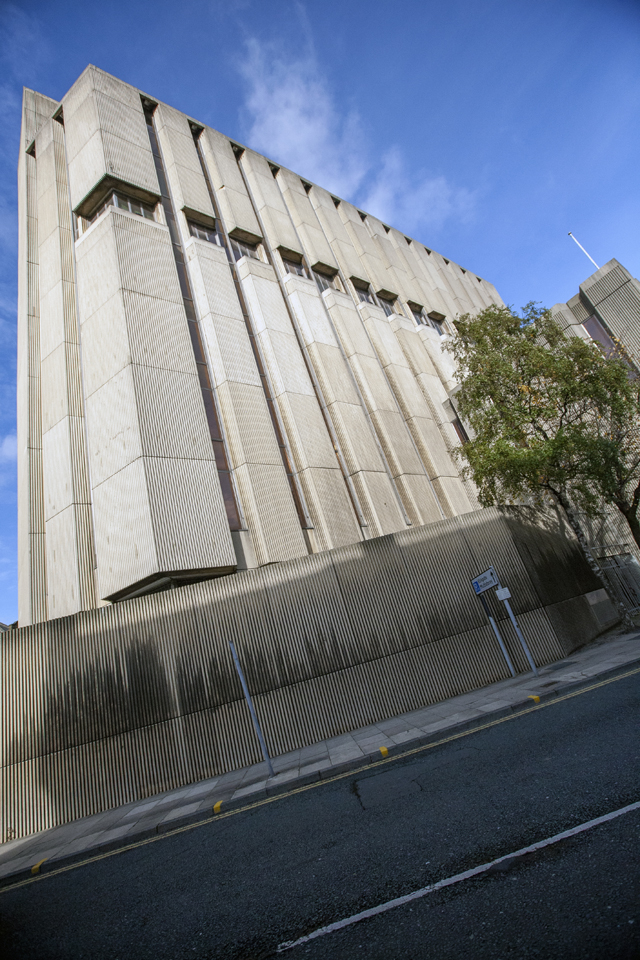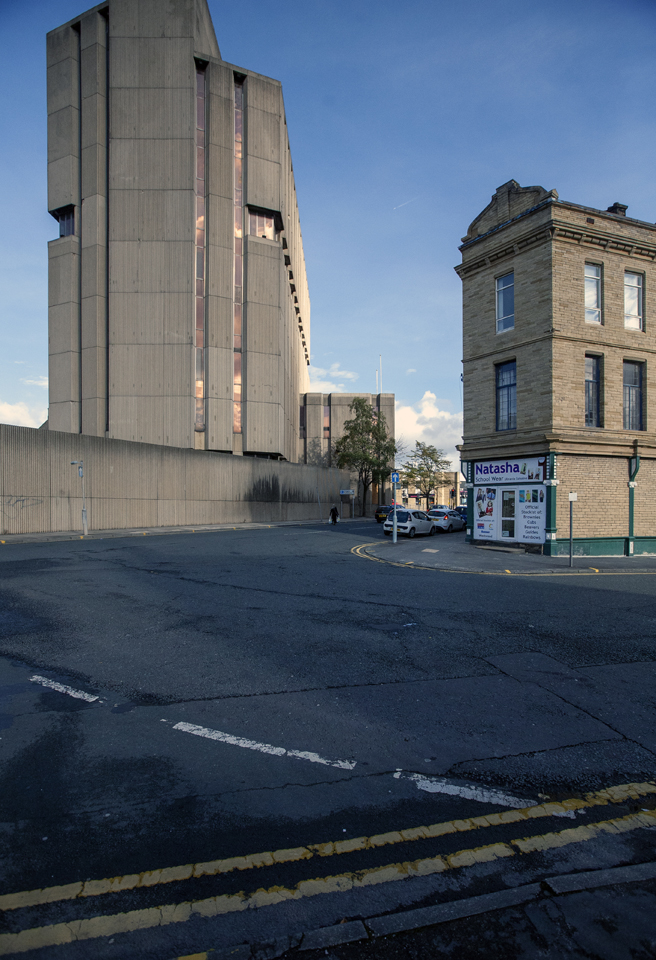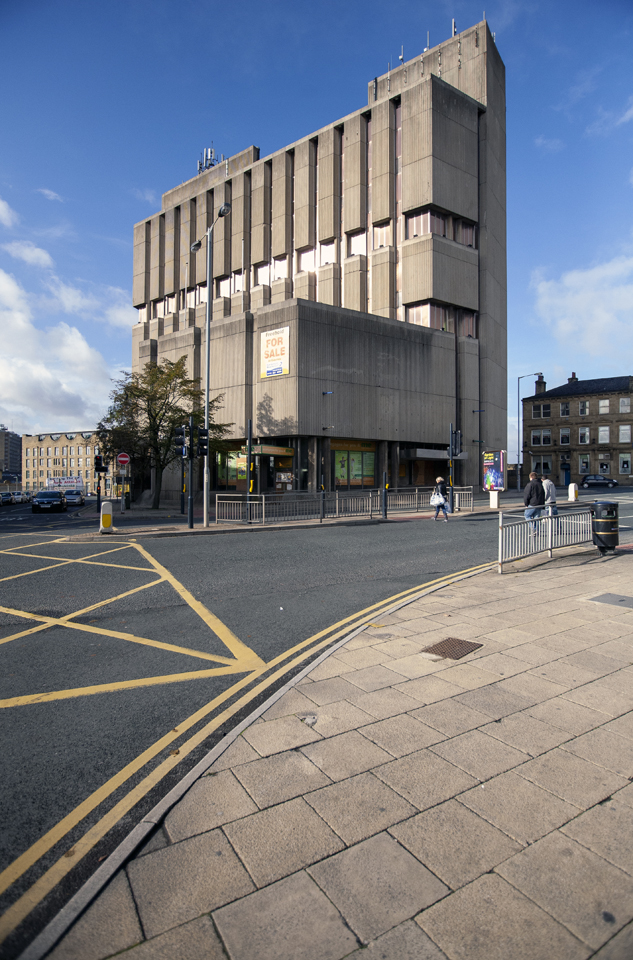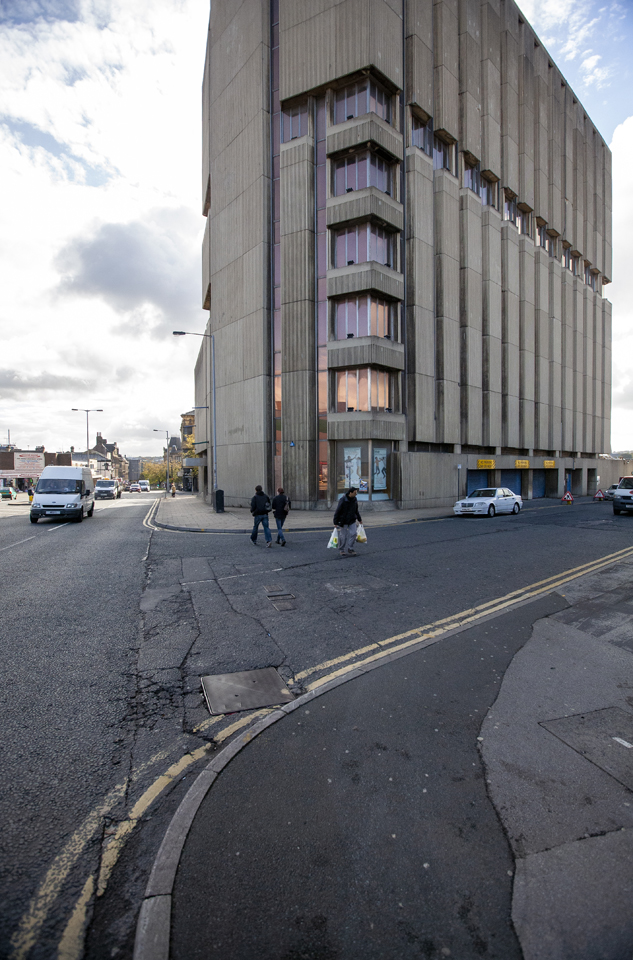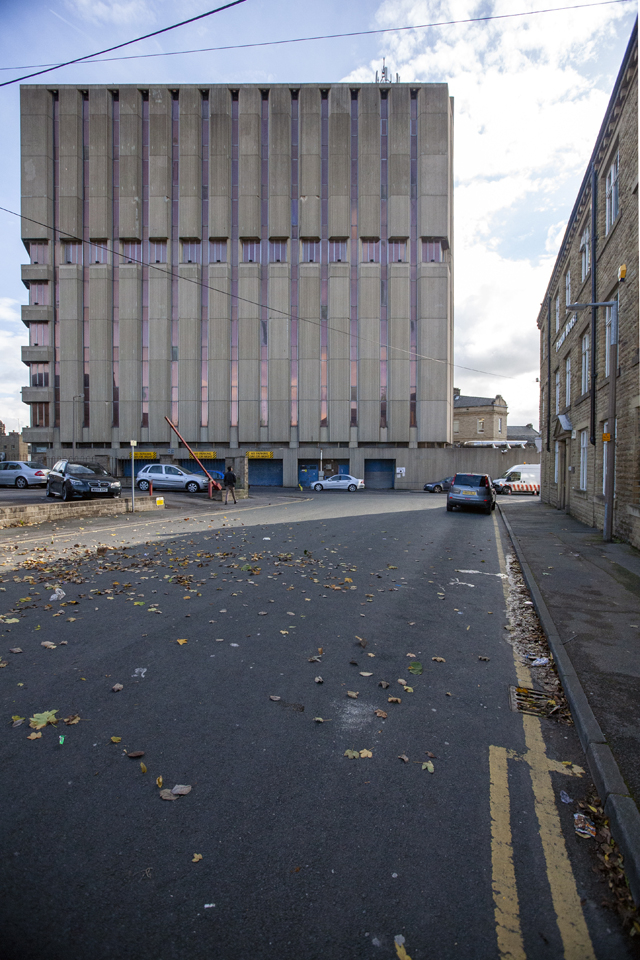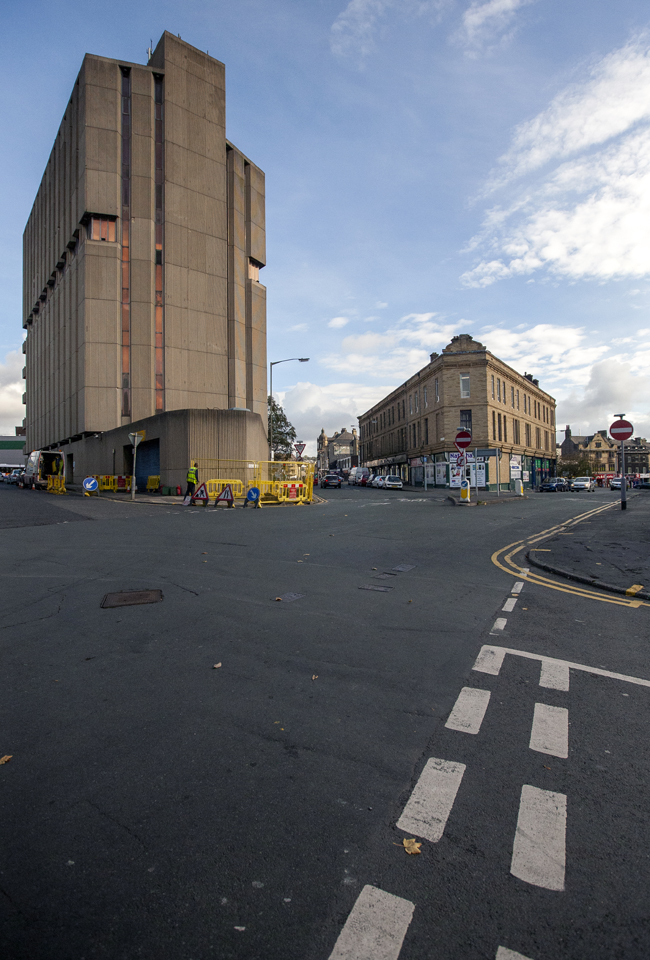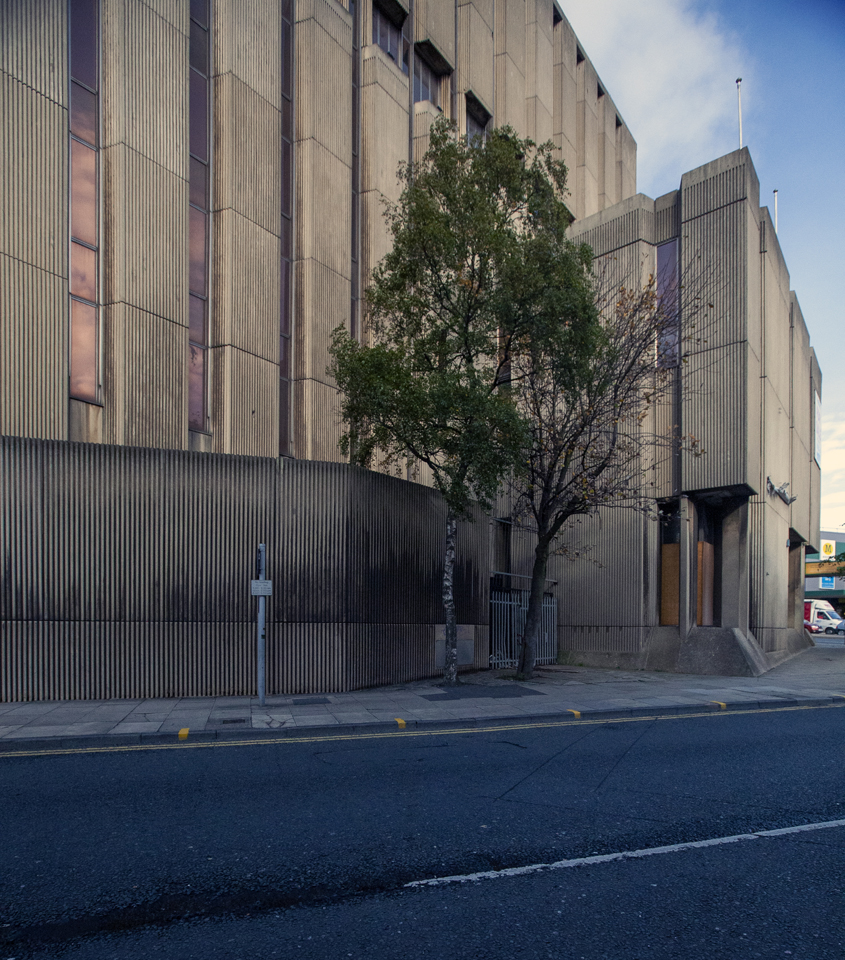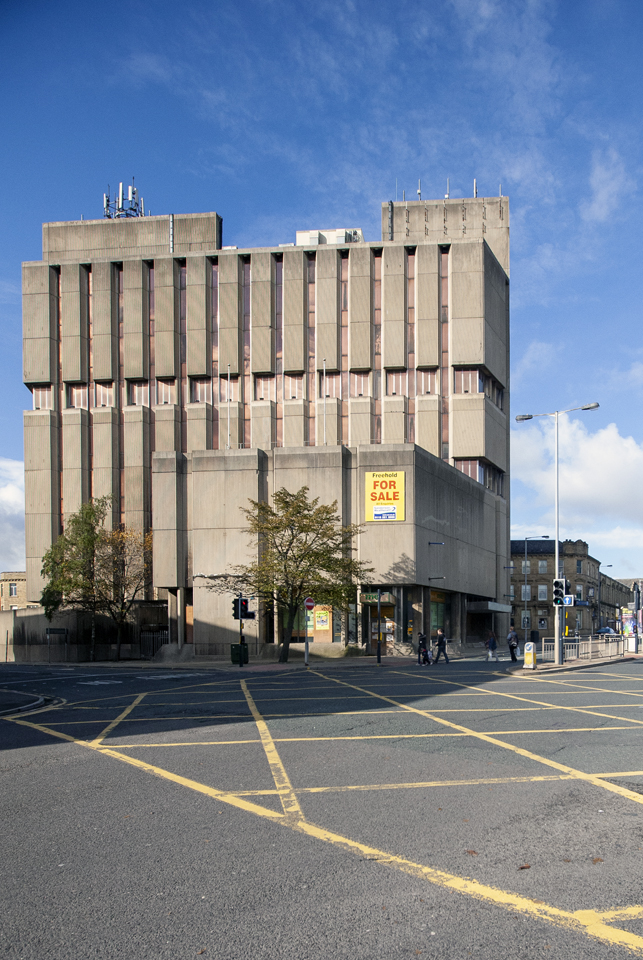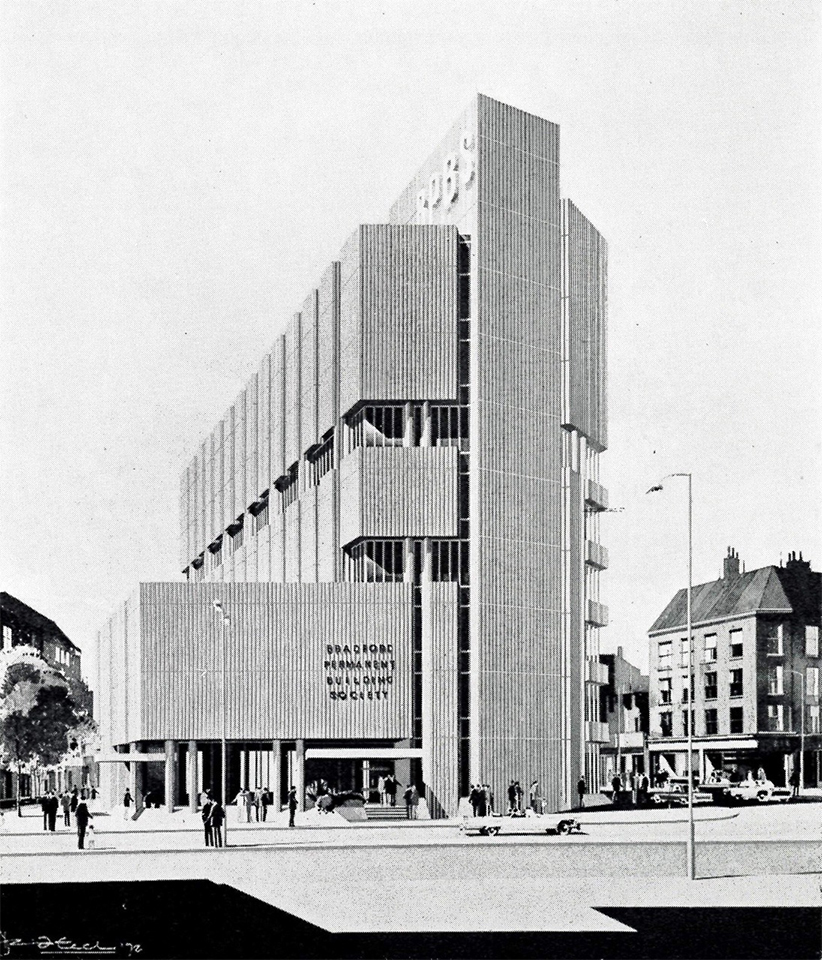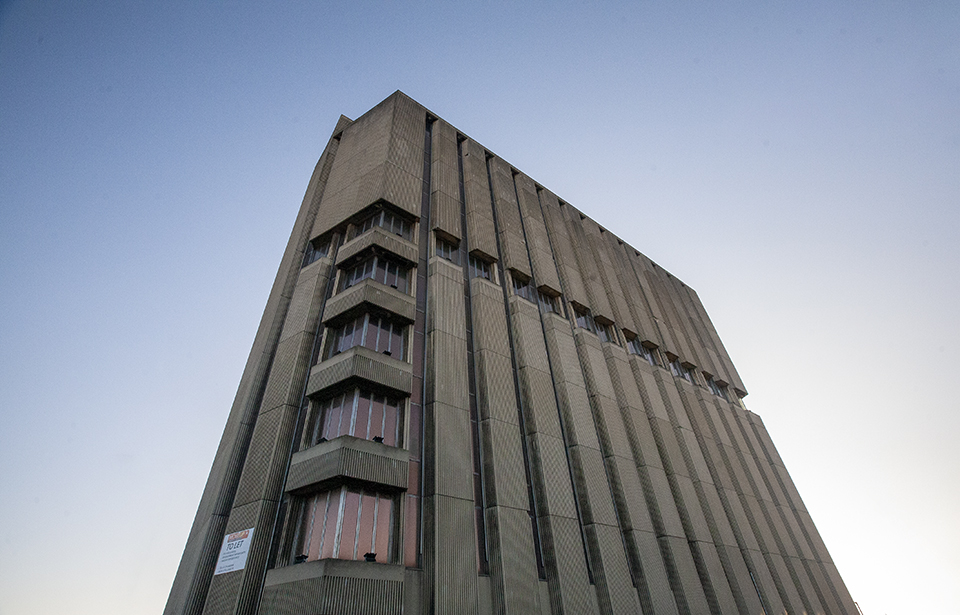High Point
1975
This buff yellow tower has so few windows that when I first clapped eyes on it, I thought it was a telephone exchange – though, to be fair, I have seen plenty of exchange buildings with more in the way of natural lighting. In fact, it was the headquarters for a building society. Initially designed for the Bradford Permanent Building Society, which merged with the Huddersfield Building Society during the construction phase, to eventually form the Yorkshire Building Society in 1982, the tower took a prominent site elevated above the town centre. The lack of windows is akin to the family of police stations developed by Lancashire County Architect’s Department in the late 1960s and likely down to similar driving factors – a sense of abundant energy and a conviction to technology meant that fully mechanically ventilated buildings were all the rage and, as such, opening lights were not deemed important. Further, a lack of windows to the outside was thought to enable focus on office tasks and no doubt the views from High Point would have been fantastically distracting! The windows that were provided were a high-quality, double glazed, solar reflective glass in stainless steel frames. John Brunton and Partners were the preeminent modern architects of the town and left their mark via several substantial buildings including the Bradford Arndale (now Kirkgate, 1972-76), Jacobs Well council offices (1974 – demolished 2019) and another building society HQ for National and Provincial (1971, demolished 2002). The practice had roots as far back as 1865 in the city and, in 1965, all of the ten partners had started as juniors in the firm, often leaving to develop their practice elsewhere before returning to senior positions. The partnership was organised as a number of smaller units each with their own specialism, designed to satisfy clients’ interests and to avoid a house style. High Point was inevitably to be a multi-storey scheme and, as such, was deliberately afforded a bold sculptural form to distinguish it from other large commercial buildings. The triangular site and the brief for a banking hall, deeds storage, clerical offices and management suites combined into the massing that survives today. Concrete emerged as a cost-effective way of achieving the desired form and impression desirable to the building society and the architects. The aggregates were selected to reflect the colour of the local York stone and the finishes were designed to control staining and weathering – and have done so admirably in the face of northern climes. From this historical distance, the building is bizarre and its sculptural qualities have been referred to as ‘utterly freakish, the severed head of some Japanese giant robot clad in a West Yorkshire stone aggregate’ [1]. It is not popular in the city and has been subject to considerable debate over its future as it has been empty for a long time with no new tenants of owners coming to the fore.
[1] Hatherley, O. (2011) A Guide to the New Ruins of Great Britain (London: Verso)
